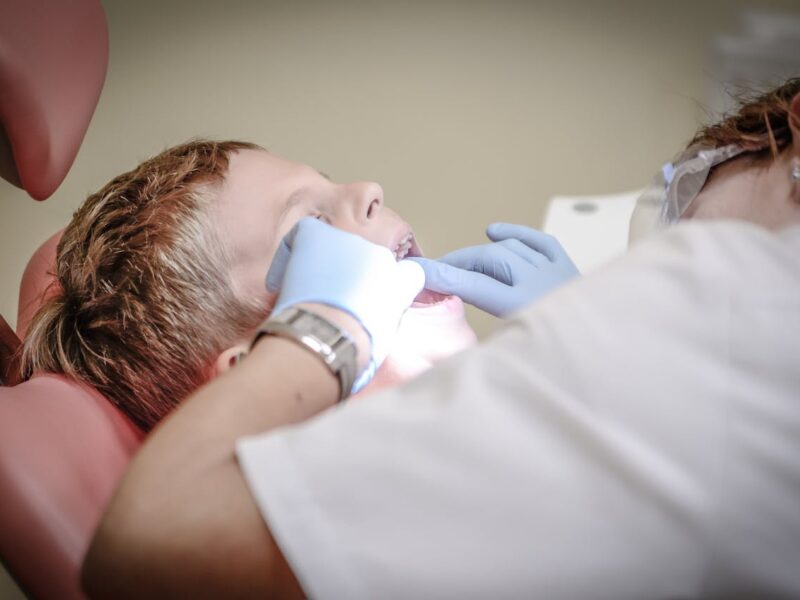Has your child been diagnosed with scoliosis? Are you still looking for information on the risks of untreated scoliosis?
Untreated scoliosis can cause problems that affect your child’s well-being for the rest of their life. When left alone, it can cause muscular and skeletal issues and can lead to early death.
Let’s take a look at some of the things you should be aware of by learning about the risks of untreated scoliosis.
Contents
Chronic Pain
One of the primary risks of untreated scoliosis is chronic pain. As the curvature of the spine increases, it can put pressure on the surrounding muscles and nerves. This causes discomfort and soreness.
This pain can be especially severe in adults who have lived with untreated scoliosis for many years. They may experience muscle stiffness, aches, and spasms that can limit their ability to perform daily activities.
Progressive Deformity
Untreated scoliosis can be a serious medical issue. Left untreated, scoliosis can cause a progressive deformity of the spine as the curvature develops further.
As the deformity worsens, it can restrict the growth of the rib cage. It can also damage the internal organs, cause pressure on the heart and lungs, and lead to nerve damage. As the curves become more pronounced, pain and discomfort from continual stress may increase.
Poor posture and breathing are also common in those with scoliosis. Without scoliosis treatment, the curvature may become severe. If the patient is a child or teenager, it may lead to problems with psychological development and difficulties with self-image.
Over time, untreated scoliosis can further deform the spinal column. This can make the condition worse and potentially lead to further disability. All these risks are why it is so important to seek early diagnosis and treatment when scoliosis is first suspected.
Reduced Mobility
Besides chronic pain, untreated scoliosis can also cause reduced mobility. As the spine curves, it can become rigid and inflexible. This makes it difficult to move and carry out normal activities.
This can lead to a decreased quality of life. This is because individuals may struggle to take part in hobbies and sports. They may even find it hard to perform routine tasks like cleaning and cooking.
Breathing Difficulties
Breathing difficulties are one of the main risks associated with untreated scoliosis. It is possible that over time, the curved spine that characterizes scoliosis may press on the chest wall. This can cause a pinched nerve or compression of the lungs, making it harder to breathe properly.
In severe cases, untreated scoliosis may lead to an inability to take in enough oxygen to meet the body’s needs. This can lead to chronic respiratory problems. These include shortness of breath, asthma, fatigue, dizziness, chest pain, and even pneumonia.
In the most extreme cases, respiratory failure may result. Breathing difficulties are especially concerning in children and adolescents. This can impact their growth and development.
Treatments for the breathing difficulties associated with it may include pursed lips breathing. You can also do exercises that strengthen the muscles that govern breathing.
Medicinal interventions and oxygen therapy are also available. Take the appropriate steps to treat scoliosis. This may be the key to avoiding serious respiratory difficulties that can be life-threatening if left untreated.
Organ Damage
Organ damage is a significant risk of untreated scoliosis. As the spinal cord becomes twisted, it also gets compressed. This leads to decreased blood flow and oxygen delivery to internal organs, such as the lungs, heart, and kidneys.
Over time, this can lead to permanent damage and dysfunction of these vital organs. The resulting organ damage can cause shortness of breath, fatigue, and extreme pain.
In the worst cases, untreated scoliosis can even lead to respiratory failure and sudden death. Early intervention is the best way to reduce the risk of organ damage in people with scoliosis.
Scoliosis patients can minimize the possible damage to their organs. They can do this through regular check-ups and treatments. This can reduce their risk of long-term medical issues.
Digestive Issues
Digestive issues are a risk of untreated scoliosis. The spine which is responsible for structural support can become curved and twisted. This can cause the abdominal organs to become compressed, impairing their functioning.
The twisting and constriction of the abdomen can cause digestive symptoms. This includes constipation, bloating, and even heartburn.
Furthermore, a person’s organs can become misaligned, leading to further digestive discomfort. The organs of the gastrointestinal tract don’t function as effectively. So, food will move more slowly through the digestive tract. This further leads to digestive discomfort.
The person’s diet may need to change to accommodate their altered digestive system. There is also a risk of vitamin and nutrient deficiencies when the digestive system is affected by untreated scoliosis.
In some cases, scoliosis surgery may be necessary to remedy the digestive problems caused by scoliosis. Check out online sources to find out more about scoliosis surgery. Proper treatment is essential to minimize the risk of digestive issues caused by the condition.
Psychological Consequences of Untreated Scoliosis
Untreated scoliosis can also have psychological consequences. Individuals with scoliosis may feel self-conscious about their appearance. This leads to a negative body image and low self-esteem.
Without seeking treatment, individuals may feel isolated and misunderstood. This can lead to a lack of motivation and a feeling of hopelessness.
They may also experience anxiety and depression. This is especially if they have to live with chronic pain and mobility limitations.
Ultimately, scoliosis can harm an individual’s psychological well-being. Especially if left untreated.
So, individuals need to be aware of the risks of untreated scoliosis. You should seek out appropriate medical and psychological attention should it arise.
Reach Out to Your Health Care Provider Today
Untreated scoliosis can lead to serious consequences for both physical and mental health. Individuals with a curvature of the spine need to seek treatment from a medical professional as soon as possible.
Early diagnosis and treatment are the keys to reducing any potential risks associated with scoliosis. If you or someone you know is suffering from scoliosis, contact a healthcare provider today to discuss options for treatment.
If you’ve found this article helpful and you’re looking for more great health content, head back to our blog now.



